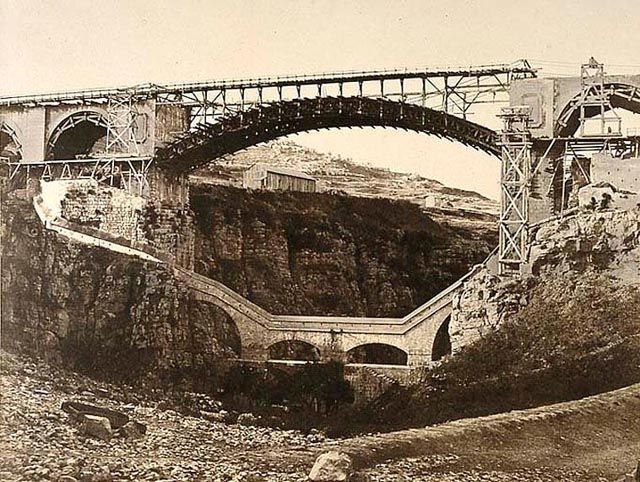
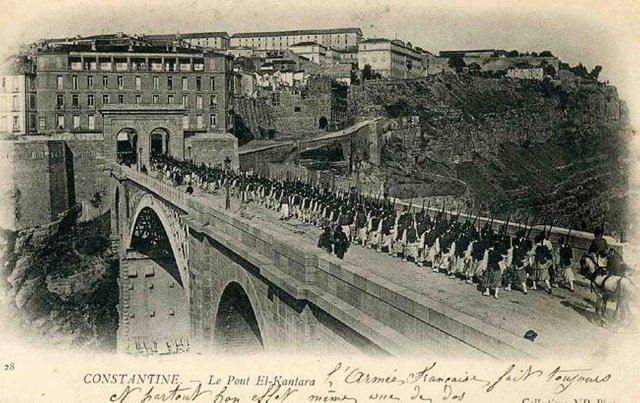
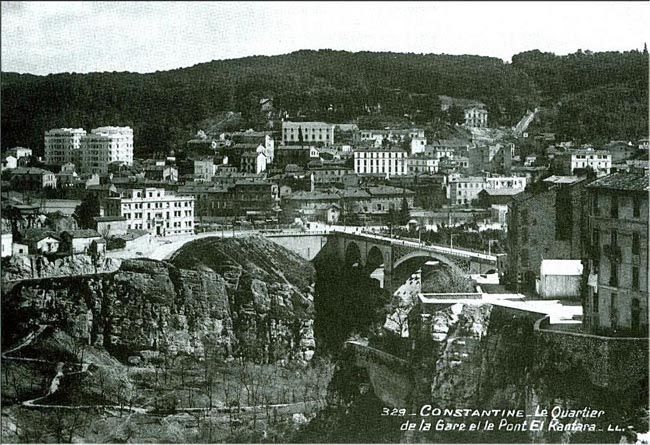
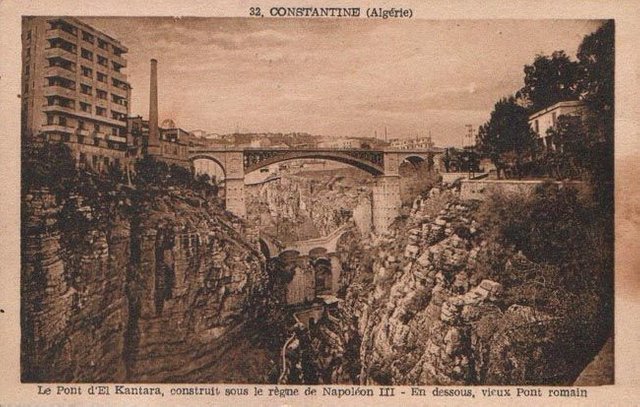
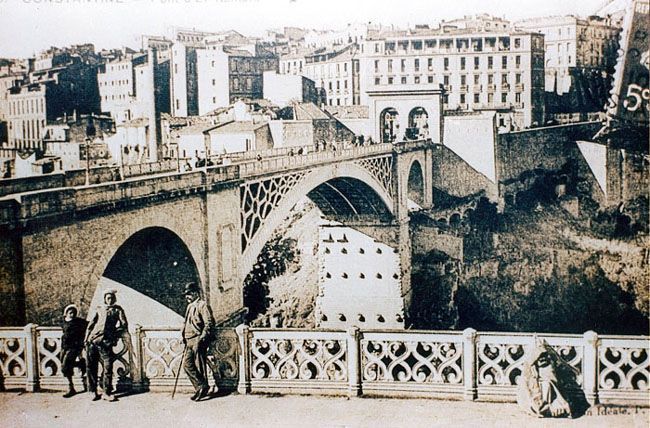
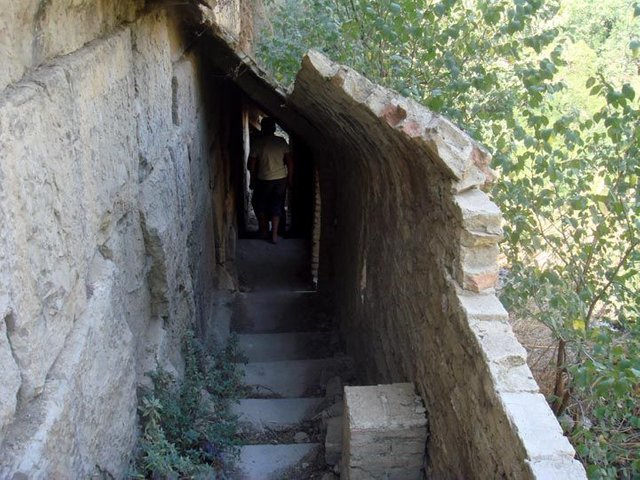
40 guns to destroy the bridge of El Kantara
El Kantara Bridge was built by Salah Bey in 1792 on the ruins of an ancient Roman bridge.
On 18 March 1857, just after the passage of an infantry detachment, the two pillars supporting the bridge on the side of the city collapsed into the abyss, leaving 21 meters of pavement and causing, in their fall, the siphon which brought to the Kasbah the waters of Jebel El Ouahch. As what remained was not very solid and dangerous, the military genius conceived the idea, bold and original, of demolishing it with cannon shots. Two drums were placed on the great natural vault of the Rhumel, and, in the presence of the whole population, on the 29th of March, 1857, at noon, fire was opened against the two pillars of the bridge, which remained standing. It took no less than forty strokes to crumble in a cloud of dust.
The siphon was restored the same year but it was necessary to wait three years before being able to rebuild the bridge. The rebuilding was decided in 1860 and the new bridge of El Kantara was delivered to traffic in 1863. It consists, as we know, of two piles of masonry built on each side of the ravine distant of one hundred (100) meters at ground level and connected by an arch 56 meters span. The deck of the bridge is 120 meters above the water level. In 1951, a portion of the "cast iron" coating of the metal arch collapsed, the municipality took the opportunity to undertake major work and expand both sidewalks and pavement.
Recall, too, that formerly, at the bottom of the National Street (formerly George Clemenceau), currently Larbi Ben M'hidi, the bridge ended in a monumental gate with two arches of stone that defended the entrance to the city. The two arches of this door were very narrow and greatly impeded the circulation. Their destruction was decided and took place around 1922. Finally, let us note, ending this chapter retrospective on the past of Constantine, that, in front of the station, the traveler is greeted by a beautiful marble statue, modern copy, due to the sculptor François Brasseur , from that of ancient Constantine preserved at the Basilica of St. John Lateran in Rome.
To be continued
On documentation
Amar MEZGHICHE.